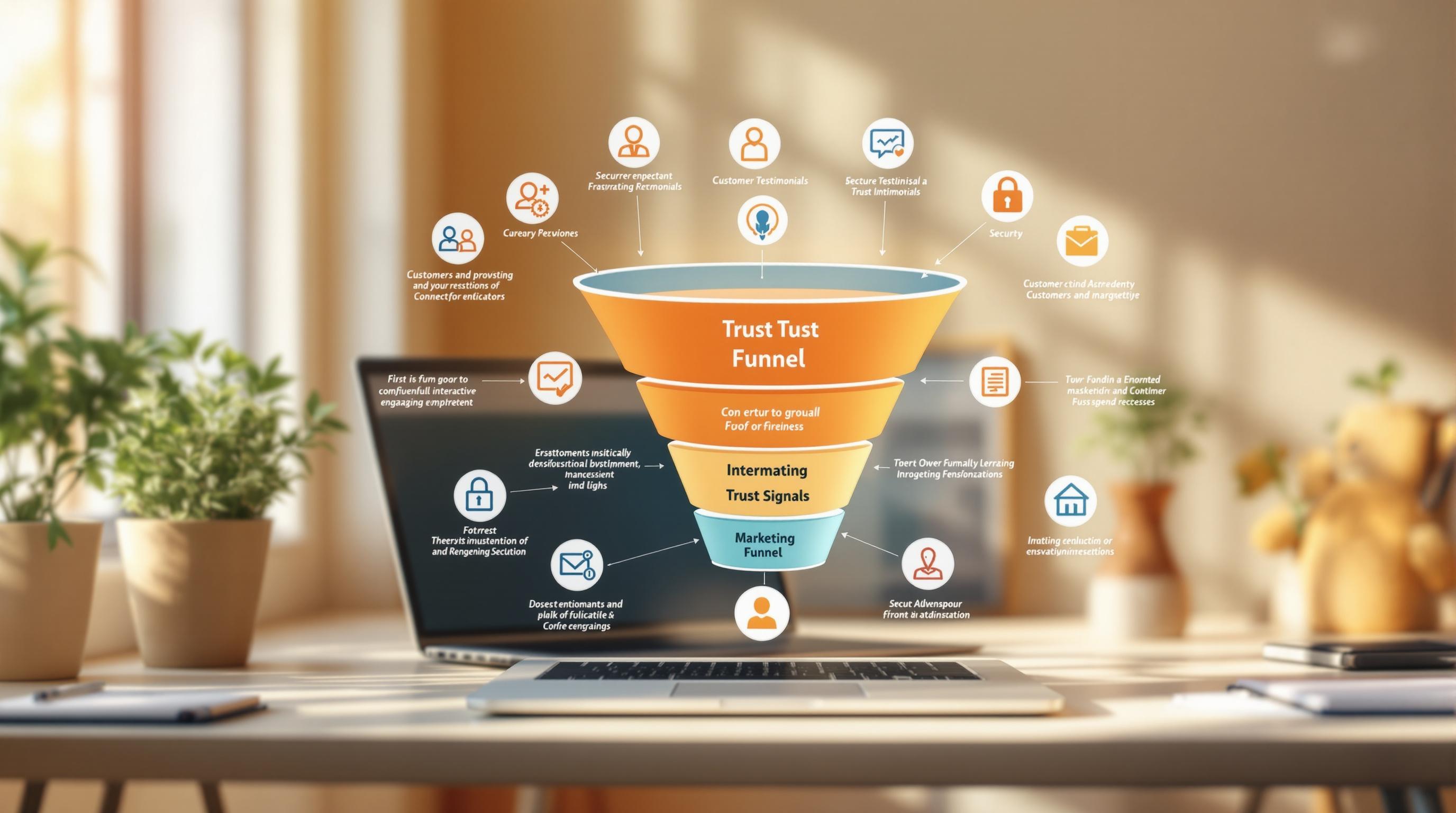API-based marketing automation connects tools like CRMs, email platforms, and analytics using APIs to automate workflows and share data in real time. This approach saves time, improves campaign performance, and reduces costs. Here's a quick summary:
- Time Savings: Automates 80% of manual tasks.
- Better Campaigns: Improves results by 73%.
- Cost Efficiency: Cuts marketing overhead by 14%.
- Faster Launches: Speeds up campaigns by 35%.
- Higher Productivity: Boosts team output 3x.
How It Works: APIs enable tools to "talk" to each other for tasks like syncing data, automating triggers, and analyzing performance.
Key Steps:
- Choose platforms with strong API support.
- Secure your APIs with encryption and access controls.
- Test API performance to ensure reliability.
Businesses like Bayer and Spotify have seen faster workflows, better engagement, and increased revenue by using APIs effectively. Start small, integrate one workflow, and expand based on results.
API Basics for Marketing
API Functions in Marketing
APIs allow marketing tools and platforms to communicate, enabling smooth data sharing and automating workflows. For instance, when your CRM triggers an email campaign based on customer actions, APIs handle this real-time data exchange seamlessly .
A growing number of businesses - 55% - view APIs as a critical part of their marketing strategy . They play a key role in tasks like:
| Function | Purpose | Common Application |
|---|---|---|
| Data Synchronization | Ensure customer data stays consistent across tools | Syncing CRM data with email platforms |
| Event Triggers | Automate responses to customer activities | Triggering emails based on website activity |
| Analytics Integration | Combine data from various sources | Feeding social metrics into dashboards |
| Campaign Automation | Launch actions based on set rules | Activating campaigns through lead scoring |
Common API Types
Marketing automation typically relies on two main API types, each suited for specific needs:
REST APIs
- Use JSON for easy and lightweight data exchange.
- Best for straightforward tasks like sending emails or updating data in real-time .
SOAP APIs
- Use XML, making them ideal for complex operations.
- Offer a rigid structure with built-in security, perfect for enterprise-level integrations and intricate workflows .
Understanding these API types is crucial, but ensuring their secure use is even more important.
API Security Guidelines
Since APIs drive essential marketing activities, strong security measures are a must to protect data and operations. On average, API breaches cost businesses $6.1 million .
"The scary thing about these breaches is that the exploited APIs worked exactly as they were designed. It's not about a bug in the code - it's about simply leveraging the predictable nature of an API against itself to make it do something the developer didn't intend." - Tyler Reynolds
Here’s how to secure your APIs effectively:
- Authentication and Authorization: Use OAuth 2.0 and JWT protocols for access control. Add multi-factor authentication for sensitive endpoints .
- Data Protection: Encrypt data both in transit and at rest. Validate inputs to block injection attacks .
- Access Control: Limit user access to only what’s necessary using the principle of least privilege. Implement rate limiting to prevent abuse .
Additional best practices include:
- Centralizing token management with an OAuth server.
- Encrypting all data transfers.
- Continuously monitoring API traffic for unusual patterns.
- Conducting regular security audits to identify vulnerabilities .
Implementation Guide
Selecting API-Ready Platforms
When choosing marketing platforms with API capabilities, focus on those with clear documentation, flexible integration options, and scalable performance. These features ensure smooth implementation and long-term efficiency.
| Feature | Why It Matters | Example Implementation |
|---|---|---|
| AI Automation | Cuts down on repetitive tasks | Predictive analytics, automated segmentation |
| Cross-Platform Support | Ensures compatibility across tools | Syncing data between CRM and email platforms |
| Real-Time Processing | Enables immediate responses | Tracking live customer interactions |
| Security Compliance | Safeguards sensitive information | OAuth 2.0, encryption protocols |
"An API integration platform allows disparate tools to communicate, eliminating the need for manual data transfer, reducing the risk of errors, and saving teams 80-100 hours per week."
API Connection Steps
After selecting the right platform, setting up smooth API connections is the next critical step.
- Define Requirements: Map out the data flows and integration points you need.
- Review Documentation: Dive into the API provider's documentation to understand:
- Available endpoints
- Authentication methods
- Rate limits
- Error handling processes
- Develop Integration: Build your connection by following best practices:
- Use a sandbox environment for testing
- Implement error handling mechanisms
- Document all configurations
- Leverage provider SDKs for efficiency
For instance, BILL streamlined user management by automating HRIS integrations, allowing for automatic updates when employees were hired or terminated.
Testing API Performance
Testing is essential to ensure your API integration is reliable and efficient.
| Testing Type | Purpose | Key Metrics |
|---|---|---|
| Load Testing | Checks performance under normal usage | Response time, throughput |
| Stress Testing | Identifies system limits | Error rates, system stability |
| Soak Testing | Assesses long-term reliability | Resource usage, memory leaks |
A great example of the impact of testing is Mailchimp's collaboration with Spotify. By implementing Mailchimp's Email Verification API, Spotify reduced bounce rates from 12.3% to 2.1%. This improvement boosted email deliverability by 34% and generated an additional $2.3M in revenue.
"Ensuring your API performs correctly is crucial for delivering a seamless user experience, maintaining system reliability, and preventing downtime under high demand, which can lead to lost revenue and customer dissatisfaction."
Common API Applications
Customer Data Management
In today's marketing landscape, keeping customer data accurate and synchronized across platforms is critical. APIs help maintain consistent customer profiles by enabling seamless communication between systems.
| Integration Type | Key Benefits | Implementation Impact |
|---|---|---|
| CRM Integration | Real-time data sync; fewer errors | Easier data integration |
| Customer Profile APIs | Unified view across platforms | Better personalization accuracy |
| Data Enrichment APIs | Automated profile updates | More precise targeting |
The typical implementation costs around $10,000 and takes 4 weeks.
"APIs act as an invisible thread that weaves diverse systems into a close-knit, high-performing marketing ecosystem. They allow platforms to 'talk' to one another, making sure that the right data flows to the right place at the right time." - Fragmatic
Automated Campaign Triggers
APIs enable marketers to automate campaigns based on customer behavior or specific data points. These triggers ensure timely, relevant communication and help create highly personalized marketing sequences.
For example, an agency used Databar's enrichment API to enhance their outreach efforts. By automating data-driven personalization, their email response rates skyrocketed from 12% to 42% .
To achieve this, focus on implementing behavioral tracking, dynamic segmentation, trigger configuration, and performance monitoring.
Live Data Analysis
APIs allow marketers to analyze data in real time, enabling quicker, more informed decision-making. Here are a few popular analytics APIs:
| Platform | Primary Use Case | Key Features |
|---|---|---|
| Google Analytics API | Web behavior tracking | Real-time visitor data, custom reporting |
| HubSpot API | Marketing automation | Campaign performance, lead tracking |
| Salesforce API | CRM analytics | Sales data, customer interaction metrics |
To ensure smooth performance, monitor usage patterns, handle errors effectively, validate data regularly, and use strong authentication protocols.
By integrating these APIs, marketing teams can act on data instantly rather than relying on periodic manual reports . This approach is especially useful for managing multiple marketing channels, as it ensures consistency across customer touchpoints and optimizes campaigns using live insights.
These use cases lay the groundwork for exploring more advanced API techniques in the next section.
Advanced API Techniques
Predictive Analysis Integration
Predictive analytics uses historical data and machine learning to anticipate customer behavior, making API-driven marketing automation smarter and more effective.
| Metric | Impact |
|---|---|
| Orders Influenced | 26.34% of total orders |
| Conversion Rate Lift | 22.66% increase |
| Email Transaction Rates | 6x higher with personalization |
One example is a B2B software company that implemented predictive lead scoring within its marketing automation platform. The result? A 35% boost in conversion rates and a 20% shorter sales cycle .
This kind of predictive power enables businesses to create more coordinated and effective multi-channel strategies.
Multi-Channel Campaign Management
Coordinating campaigns across multiple channels is critical. While 85% of marketers acknowledge its ROI benefits, only 58% feel confident in executing such strategies .
Key areas to focus on for multi-channel API integration include:
| Component | Implementation Strategy | Expected Outcome |
|---|---|---|
| Centralized Bidding | Manage bids across platforms in one place | Prevent internal competition |
| Data Integration | Merge data from various channels | Gain a complete customer view |
| Audience Segmentation | Use platform-specific targeting rules | Drive better engagement |
Tailored experiences play a huge role in engagement. On average, customers spend 38% more when their interactions are personalized .
Custom API Solutions
Sometimes, off-the-shelf APIs aren’t enough. Custom API solutions are designed to address specific challenges and meet unique marketing goals.
Here’s how to approach custom API implementation:
-
Discovery Phase
Start with scoping workshops to clearly define marketing objectives and align them with the API solution . -
Technical Implementation
Focus on organizing data and mapping processes to cut costs and speed up digital transformation . -
Integration Testing
Perform thorough testing to ensure smooth data flow, maintain accuracy, and ensure system reliability.
For instance, a major online retailer successfully reduced its churn rate by 25% and increased customer lifetime value by 15% after integrating predictive analytics into its marketing automation platform .
The predictive analytics market is expected to hit $67.86 billion by 2032 , showing just how impactful these advanced API techniques can be for improving efficiency and customer engagement.
sbb-itb-a84ebc4
Performance Tracking
Success Metrics
Focus on key performance indicators (KPIs) that align with your business goals instead of superficial metrics .
| Metric Category | Metrics | Purpose |
|---|---|---|
| Engagement | Open Rate, CTR, Time on Site | Understand how your audience interacts with your content |
| Conversion | Form Completion, Lead Score, MQLs | Monitor progress through the customer journey |
| Customer | CAC, CLV, Retention Rate | Analyze long-term business effects |
| Value | Revenue Generated, ROI, RCR | Measure financial outcomes |
"Look at your data, figure out what it's telling you from a very high level, and then, from there, build your roadmap."
– Chris Gordon, Head of client success, Noticed
API Monitoring Tools
Effective monitoring tools track metrics like response time, latency, and throughput, helping teams resolve issues quickly . Here’s what to keep in mind:
- Real-time Availability: Use failover systems and disaster recovery plans to ensure uptime.
- Response Time: Monitor percentile thresholds to catch irregularities early.
- Error Rates: Keep an eye on failed requests and their business impact.
- Throughput: Compare against performance baselines to spot bottlenecks.
"We get Catchpoint alerts within seconds when a site is down. And we can, within three minutes, identify exactly where the issue is coming from and inform our customers and work with them."
– Martin Norato Auer, VP, CX Observability Services, SAP
Once monitoring is solid, shift your focus to scaling and improving your system.
Growth and Optimization
To grow and improve performance, consider these strategies:
| Optimization Area | Strategies |
|---|---|
| Scalability | Horizontal scaling, Load balancing, Auto-scaling |
| Response Time | Reduce network latency, Implement asynchronous processing |
| Security | OAuth 2.0, JWT authentication, Role-based access control |
| Caching | Use CDNs, Develop cache invalidation methods |
"Engagement tells us everything we need to know. If we're getting too close to the sun with personalization, that is absolutely going to reflect in the data and we'll know to back off."
– Sean Donahue, Director of email marketing, Power Digital
For example, a SaaS platform operating across multiple regions (US-East on AWS, Europe-West on Azure, Asia-Pacific on Google Cloud Platform) implemented a tiered response system. This included instant support alerts and automated failover mechanisms to maintain continuous service .
Regular audits are key to spotting optimization opportunities. Reducing unnecessary API calls, fine-tuning database queries, and adopting smarter caching methods can ensure your automation system scales effectively as your business expands.
How to Use Dataslayer's API Query Manager: Easy Marketing Data Integration
What's Next for API Marketing
As API performance and optimization trends continue to evolve, the marketing landscape is poised for some major shifts.
New API Technologies
AI and machine learning are reshaping API development by automating tasks like documentation and usage monitoring, leading to smarter and more efficient performance .
| Technology Trend | Impact on Marketing |
|---|---|
| Serverless Architecture | Cuts operational costs and boosts campaign efficiency |
| Edge Computing | Enhances real-time personalization by reducing delays |
| API-as-a-Product | Provides modular and scalable marketing solutions |
| Open-Source APIs | Makes marketing automation more accessible |
For example, Starbucks' Deep Brew platform uses AI-powered APIs to analyze customer data and deliver personalized recommendations. This strategy has driven a 6% increase in US same-store sales and expanded its loyalty program to nearly 18 million members .
Industry Changes
As marketing automation evolves, security models like Zero Trust are becoming essential to align with advancing technology .
Some key industry trends include:
| Trend | Expected Impact |
|---|---|
| Federated API Management | Streamlines control across marketing platforms |
| Event-Driven APIs | Improves responsiveness for real-time campaigns |
| Hybrid Platforms | Simplifies integration of diverse marketing tools |
| Advanced API Analytics | Delivers richer insights into campaign performance |
"Compliance isn't just a legal obligation – it's a vital part of a successful API strategy." - Sameer Parulkar, Author, MuleSoft Blog
Preparation Steps
To stay ahead, focus on these areas:
| Focus Area | Action Items |
|---|---|
| Data Requirements | Identify key data points needed for automation |
| Security Compliance | Use encryption and conduct regular security audits |
| API Monitoring | Set up tools for real-time performance tracking |
| Communication | Create clear channels for sharing API updates |
Emphasize API observability, detailed documentation, and robust testing environments . These steps will help ensure smooth transitions as new API technologies and capabilities emerge.
The future of API-driven marketing lies in building smarter, more secure, and efficient systems that can meet shifting market needs while staying compliant with evolving regulations . Businesses that invest in strong API infrastructures will be well-positioned to seize upcoming opportunities.
Summary
Main Points
API-based marketing automation is changing how businesses operate by delivering measurable results. When done right, it can lead to impressive outcomes:
| Metric | Impact |
|---|---|
| Marketing Overhead | Reduced by 14% |
| Campaign Deployment | 35% faster |
| Team Productivity | Tripled |
| Data Errors | 35% fewer mistakes |
Using liquid personalization can increase newsletter conversions by 63%, while action-based messages lead to 1.8x higher opt-in conversions . These numbers highlight practical ways to kick off your API automation efforts.
Getting Started
To get the most out of API-based marketing automation, focus on these strategies:
| Focus Area | Implementation Strategy |
|---|---|
| Platform Selection | Opt for API-ready platforms that support OAuth or Personal Access Tokens |
| Data Integration | Create unified APIs to ensure smooth connections with third-party platforms |
| Automation Tools | Use platforms like HubSpot, Mailchimp, or ActiveCampaign for integration |
| Performance Tracking | Set up dashboards for real-time monitoring and automated reporting |
For more tools and resources to build API-driven marketing systems, visit the Marketing Funnels Directory at topmarketingfunnels.com. They offer curated solutions for various marketing needs.
Start small - test with one workflow and expand based on results . For example, in early 2024, an e-commerce company linked its payment gateway to its inventory system. Within three months, sales jumped by 30% . This showcases the potential of well-planned API automation.


